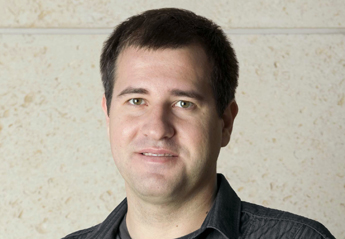
Scientific Discipline
Computational Biology, Genetics
Related Links
Host Institution
Center for Genomic Regulation
Current Position
Dr. Kondrashov is Catalan Institute for Research and Advanced Studies (ICREA) Research Professor and a group leader in the Laboratory of Evolutionary Genomics in the Bioinformatics and Genomics Program, Center for Genomic Regulation, Barcelona, Spain.
Current Research
Evolutionary and Population Genomics
Biography
Fyodor Kondrashov has little interest in how organisms are at the present moment—far more captivating, he thinks, is how they have evolved and continue to evolve. Whether he’s studying the emergence of color patterns in songbirds or how changes in genes over time affect human disease, Kondrashov is driven by a need to understand the evolutionary dynamics of how organisms change.
In many ways, Kondrashov’s life reflects what he studies—his interest in science and evolution can be largely attributed to a combination of early environmental influences and heritable traits. He is the youngest in a long line of scientists. His grandfather is a biophysicist, his grandmother is a biochemist, and his father worked as an evolutionary biologist in Puschino, a town near Moscow that was constructed specifically for biological research and houses a dozen scientific institutes. “The proportion of the community involved in science was insanely high. It creates this atmosphere that science isn’t a job but a way of life,” Kondrashov says. “I had this sense from early on that adults can spend their life asking fundamental questions about how nature works.”
He was introduced to change at an early age, too. When he was 11, the Kondrashov family moved from Soviet Russia to Madison, Wisconsin—a move that required an abrupt shift in language, culture, and societal norms, even while the focus on science remained. His family continued to surround themselves with scientists from different fields.
In the course of such an informal gathering Kondrashov, a college senior majoring in ecology and biology, met Eugene Koonin, an investigator at the National Center for Biotechnology Information at the National Institutes of Health. Koonin invited him to do an internship in his lab after graduation. Kondrashov ended up staying for three years. “I asked what my job description was, and he said that it was to do whatever I find interesting,” Kondrashov says. During that time he worked independently, studying how genes evolved in everything from bacteria to mammals and was constrained only by his imagination.
Kondrashov went on to study genetic evolution at the graduate level, getting his master’s degree in population biology from the University of California, Davis, and his Ph.D. in evolutionary biology from the University of California, San Diego, where he studied under biologist Doris Bachtrog. In Bachtrog’s lab, Kondrashov analyzed how gene duplications affect evolution and the analysis of genome evolution as a whole. In 2008, he went directly from grad school to heading his own lab at a new institute in Spain: the Center for Genomic Regulation in Barcelona. He was keen to explore a new culture, and his adventuresome leap into the job paid off. The work he’s done there is leading to a new set of questions about molecular evolution.
The imperfect process by which cells copy genetic material often creates new versions of genes and allows evolution to happen across generations. A cell might copy a few sections of a gene incorrectly, blocking the gene’s function or perhaps giving it a new purpose altogether. Or it might make two copies of a gene, a phenomenon called gene duplication. Kondrashov wants to know how such cellular mishaps affect the process of evolution and the biological fitness of organisms.
Kondrashov uses computers for most of his work, analyzing vast quantities of experimental data to see how different versions of genes arise. He studies genomes of organisms from fish to birds to humans to investigate the speed, effect, and mechanisms of gene variance and evolution. He’s found that mutations that cause disease in one type of organism may be harmless in another, and he is trying to work out the molecular details behind such differences.
Kondrashov has also contributed to the theory of the effect of gene duplications on organisms. Over the long term, duplications are important because the copied version of a gene often develops a distinct function or variance from the original version. Most scientists have assumed that in the short term having two identical copies of a gene has no effect on an organism’s biology. Kondrashov, however, thinks that such duplications are far more likely to be beneficial or harmful to an organism. Specifically, his hypothesis is that most gene duplications that are maintained over long periods of time have emerged with the help of natural selection.
“So far, this claim remains untested,” Kondrashov says. But not for long. The adaptability he learned as a child continues to influence him, and he’s now expanding his lab to test these theories and others on living animals.
Articles & News
Research Papers
Selected Research Papers



